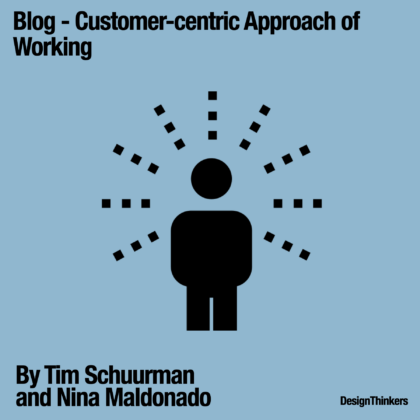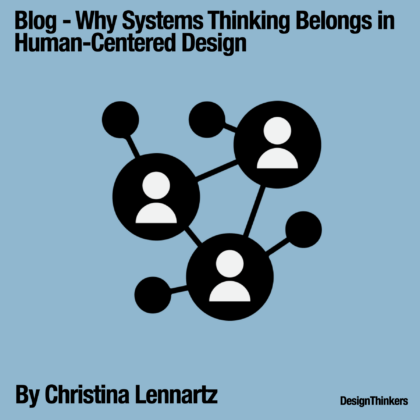
Seeing the Forest: Why Systems Thinking Belongs in Human-Centered Design
Design Thinking promises to help organizations develop products and services with the end user in mind. After all, it’s called human-centered design for a reason. But what does it truly mean to put the human at the center?
Written by Christina Lennartz
Humans are not isolated individuals acting in a vacuum. They are shaped by the systems they live in – families, teams, organizations, cultures, economies. Each person’s needs, behaviors, and decisions are influenced by a complex web of visible and invisible forces. So if we’re serious about designing for people, we also need to design for the systems that surround them.
That’s where Systems Thinking comes in.
Moving from the Tree to the Forest
Design Thinking gives us powerful tools to zoom into the user’s experience – to empathize, ideate, prototype, and test. But sometimes, in our effort to improve the “tree,” we lose sight of the “forest.” In German, there’s a phrase: “Man sieht den Wald vor lauter Bäumen nicht” – we can’t see the forest for the trees.
Systems Thinking invites us to step back and view the entire ecosystem. It helps us understand how structures, relationships, policies, mental models, and cultural norms interact to influence people’s behavior. It’s not about rushing to fix a problem — it’s about learning to sit with it, observe it, and explore its deeper causes.
In short, Systems Thinking is essential for tackling wicked problems — the messy, complex, and evolving challenges that don’t have clear boundaries or easy fixes.
When Systems Thinking Matters Most
Systems Thinking becomes especially valuable when:
- Problems persist despite well-designed solutions.
- Multiple stakeholders are involved, often with conflicting goals.
- Change efforts stall due to invisible resistance or misalignment.
Solutions improve one area while unintentionally creating new issues elsewhere.
For example, imagine an organization that invests in redesigning its digital services to improve customer experience. The interfaces are sleek, the journeys refined — but internally, teams remain siloed and communication bottlenecks persist. Without addressing the organizational system behind the scenes, even the best design won’t reach its potential. Systems Thinking helps uncover these hidden forces.
A Shift in Mindset
Systems Thinking isn’t just a toolkit. It’s a mindset – one that calls for a different way of seeing, thinking, and working. It asks us to resist the urge to jump to solutions and instead slow down to understand. It’s about noticing patterns, not just problems; connections, not just components.
This mindset requires us to:
- Zoom out before zooming in. To see the broader system and how parts influence one another.
- Hold multiple perspectives at once. To recognize that different stakeholders may see the same problem in vastly different ways – and all may be valid.
- Look beyond symptoms. To uncover deeper root causes, structures, and feedback loops that perpetuate the current state.
- Challenge assumptions and mental models. To understand how beliefs, norms, and ways of working shape system behavior, and how they might be redesigned.
Perhaps most importantly, it teaches us that meaningful change often starts below the surface. It’s not just about shifting policies or redesigning processes. Real transformation comes when we explore—and shift—the mindsets and relationships that uphold the system in the first place.
Rather than seeing these two approaches as separate, we see them as mutually reinforcing.
How We Use Systems Thinking at DesignThinkers
At DesignThinkers, we often describe Systems Thinking as the wide-angle lens that complements Design Thinking’s close-up focus. Both are human-centered. Both are creative, iterative, and oriented toward meaningful change. But they differ in how they approach complexity — and when used together, they amplify each other.
Here’s how they compare and complement:

Rather than seeing these two approaches as separate, we see them as mutually reinforcing. Design Thinking helps us design interventions that are desirable and practical. Systems Thinking helps ensure those interventions are meaningful and sustainable in the long run. One helps us understand the people. The other helps us understand the environment they live and work in.



